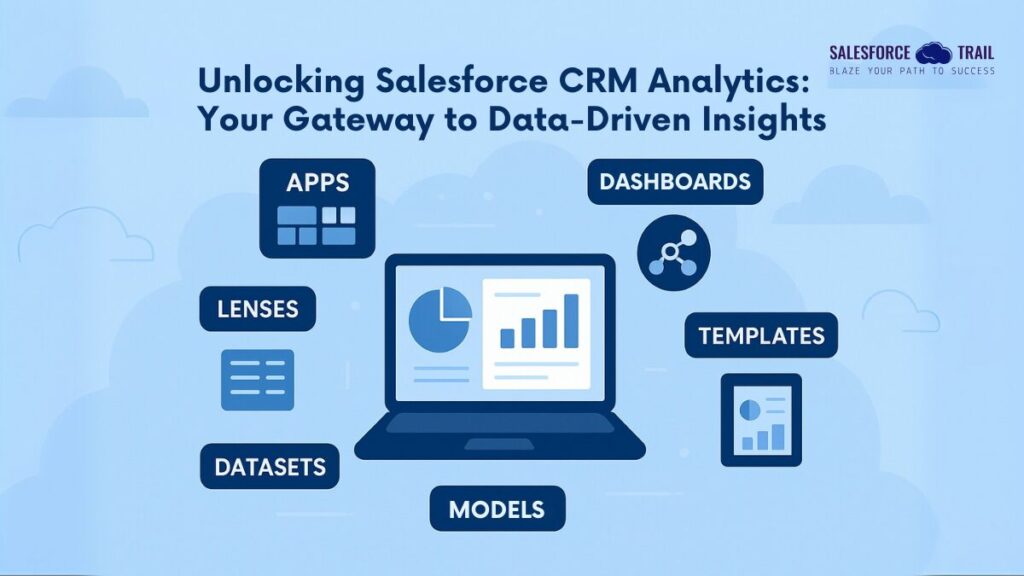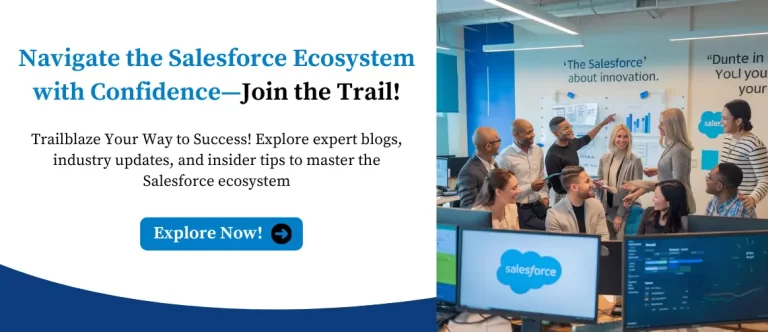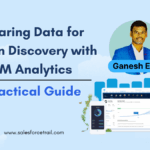Salesforce CRM Analytics is a powerful tool that empowers businesses to harness the full potential of their data. It plays a crucial role in driving business success in the current era by providing actionable insights, enhancing customer experiences, and improving operational efficiency. Whether you’re looking to boost sales performance, gain valuable customer insights, or streamline operations, Salesforce CRM Analytics offers the tools and capabilities to achieve your goals.
Getting Started with Salesforce CRM Analytics
Here, you can experiment with new features, build custom solutions, and refine your skills without affecting your live production data.
- Log In: Use the provided link to log in to your development org.
- Explore: Navigate through the various features and tools available.
- Build and Test: Create custom objects, fields, and applications. Test your configurations and integrations.
- Learn: Take advantage of Salesforce’s extensive documentation and resources to enhance your knowledge.
Link to Your Development Org: https://www.salesforce.com/form/signup/freetrial-crm-analytics/
Steps to Dive into CRM Analytics:

Home page of the Analytical Studio:

In Salesforce CRM Analytics (CRMA), these elements play crucial roles:
- Apps: Collections of dashboards, lenses, and datasets that help organize and manage your analytics content.
- Dashboards: Visual representations of your data, consisting of various components like charts, tables, and metrics.
- Components: Individual elements within a dashboard, such as charts, tables, and filters, that display specific data insights.
- Lenses: Tools for exploring and visualizing data within a dataset. You can create charts and tables to analyze data and then save these visualizations.
- Models: Representations of your data structure, often used in predictive analytics to forecast trends and outcomes.
- Datasets: Collections of data that you can explore and visualize. Datasets are the foundation for creating lenses and dashboards.
- Templates: Pre-built configurations that help you quickly create apps, dashboards, and other analytics content with best practices in mind.
- Subscription: You can subscribe to CRM Analytics dashboards and specify delivery schedules and recipients, ensuring you receive fresh snapshots of your data at your preferred times
Deep Dive: Data Manager in Salesforce CRM Analytics
The Data Manager in Salesforce CRM Analytics is a crucial tool for managing dataflows, recipes, and connections. Here’s an overview of its functionalities and how you can monitor jobs and manage connections.
Job Monitor:
The Job Monitor in CRM Analytics is a tool that helps you track the status and performance of various data-related jobs, such as dataflows and recipes. It provides information on the start time, duration, and status of the last 10 jobs, retaining the last 7 days of job history You can view error messages, download error logs, and monitor the number of jobs remaining from your org’s 24-hour limit Job statuses include Running, Failed, Successful, and Warning
Data Assets:
Data assets in CRM Analytics include various elements designed to represent different stages of data refinement, such as collections of raw data sourced from multiple systems.
Recipes:
Recipes in CRM Analytics are used to clean, transform, and enrich data before loading it into one or more targets. They allow you to join datasets, apply transformations, and configure output data. Recipes are essential for preparing data for analysis and ensuring high-quality, ready-to-use datasets.
Usage:
It will provide an overview of org usage, including the number of rows in all datasets, output to Salesforce, output to Snowflake, and Amazon S3, and connected objects.
Connections:
Connections in CRM Analytics allow you to integrate data from various sources, both inside and outside of Salesforce. You can use connectors to access data from local Salesforce orgs, external Salesforce orgs, apps, data warehouses, and database services. Data sync ensures that data is regularly updated and ready for use in recipes and dashboards
Data Templates:
Data templates in CRM Analytics enable you to create reusable blueprints for apps. These templates consist of datasets, dashboards, lenses, recipes, or dataflows. They allow other organizations to create their own versions of your app, built on their own data and customizations. Templates streamline the app development process and ensure consistency across different implementations.
Top Benefits of Using Salesforce CRM Analytics
Salesforce CRM Analytics delivers a competitive edge by transforming raw data into actionable intelligence. Here’s how businesses benefit from adopting this powerful platform:
Real-Time Insights for Smarter Decisions
Make informed decisions faster with real-time dashboards and visualizations. Whether you’re tracking sales performance or customer behavior, Salesforce CRM Analytics offers up-to-date metrics that matter most to your business.
Enhanced Customer Understanding
Access 360-degree customer views by integrating data across multiple touchpoints. Identify trends, preferences, and engagement patterns to create personalized experiences that boost loyalty and satisfaction.
Streamlined Operations
Automate routine reporting and data transformation processes using recipes and dataflows. This reduces manual effort, minimizes errors, and speeds up time to insight.
Predictive Analytics with Einstein AI
Leverage built-in AI and machine learning capabilities to forecast trends, identify opportunities, and detect potential risks. Einstein Discovery adds intelligence to your data with predictive modeling.
Secure, Scalable, and Integrated
Built natively on the Salesforce platform, CRM Analytics ensures top-tier security and scalability. Easily integrate with your existing Salesforce org, third-party apps, and data warehouses.
Customizable Dashboards and Apps
Tailor dashboards, apps, and templates to suit specific business needs. CRM Analytics lets you design analytics your way.
Proactive Alerts and Subscriptions
Stay ahead of the curve with scheduled reports and dashboard subscriptions. Receive timely updates directly in your inbox or mobile app—no need to log in daily.
Final Thoughts
Salesforce CRM Analytics transforms how organizations understand and use data. With tools to explore, visualize, and act on business intelligence, it empowers users at all levels—from marketers and sales reps to analysts and executives. By mastering its capabilities, your organization can move from reactive reporting to proactive decision-making.
Must-Visit Links:
- How to Crack the Salesforce Interview: Real Questions and Tips from Experts
- How Much You Can Earn as a Salesforce Consultant in 2025?
- Top Most In-Demand Salesforce Skills for 2025: What Professionals Need to Know
- The Importance of Hands-On Experience in Mastering Salesforce Skills
- How I Passed the Salesforce Data Architect Exam on My First Attempt
- How to Prepare for the Certified Agentforce Specialist Certification Exam
Resources
- [Salesforce Developer]- (https://developer.salesforce.com/)
- [Salesforce Success Community] (https://success.salesforce.com/)
For more insights, trends, and news related to Salesforce, stay tuned with Salesforce Trail

Ganesh Ega
Ganesh brings over 4+ years of expertise in CRM Analytics, with a strong background in Salesforce development. As a seasoned software developer, he has created numerous dashboards and solutions using Salesforce CRM Analytics. His passion for staying up-to-date with the latest enhancements and features drives him to continuously master new skills. Ganesh is dedicated to sharing his knowledge and expertise with others, empowering them to unlock the full potential of CRM Analytics
- Ganesh Ega#molongui-disabled-link
- Ganesh Ega#molongui-disabled-link
- Ganesh Ega#molongui-disabled-link













